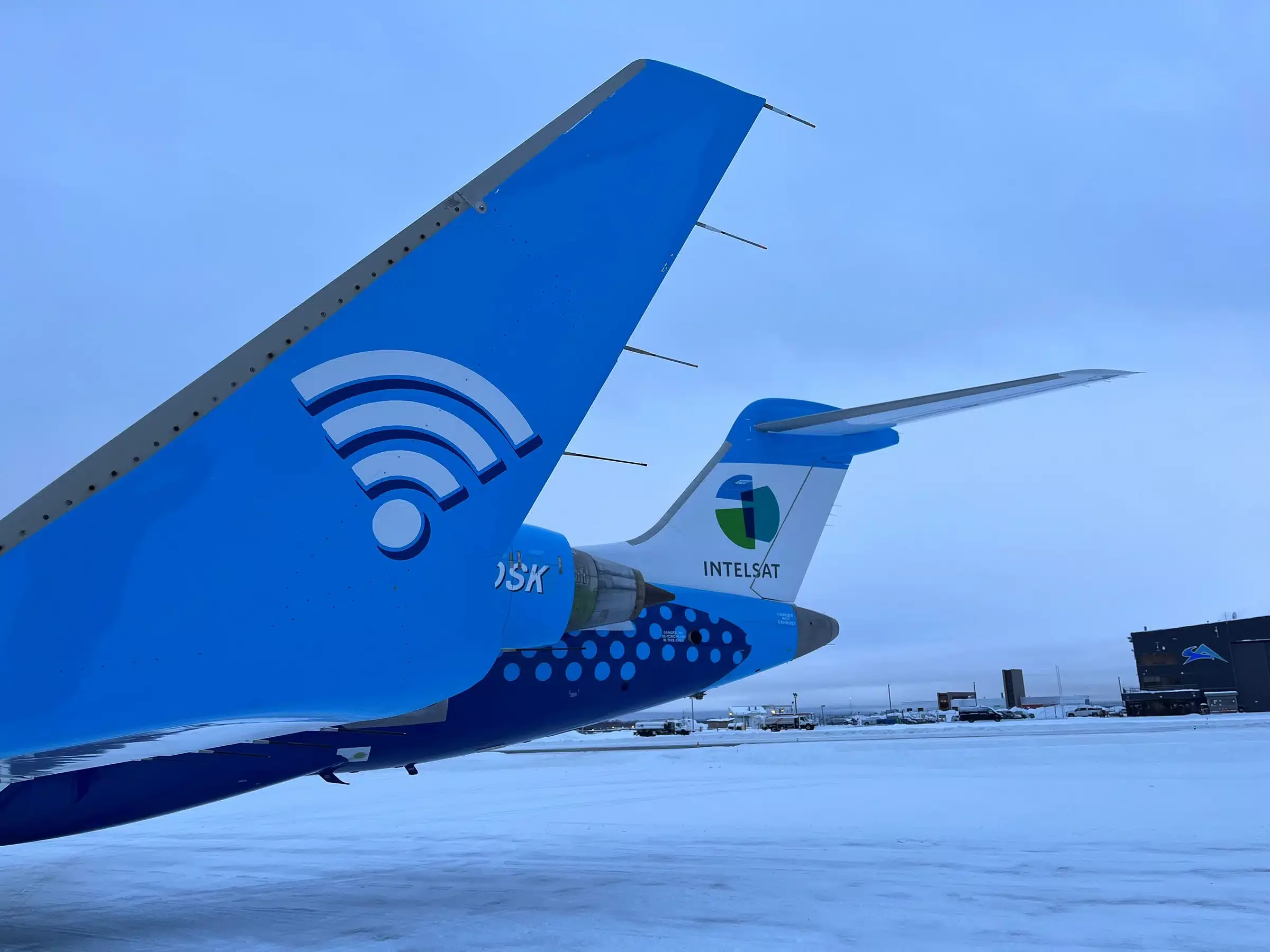Latest News

Intelsat tested both GEO and LEO connectivity with an ESA antenna in December. Photo: Intelsat
Intelsat recently completed a flight test to the Arctic Circle to demonstrate in-flight connectivity (IFC) service at extreme northern latitudes, using Eutelsat OneWeb’s network.
In mid-December, Intelsat flew its test aircraft, a CRJ-700 regional jet equipped with an electronically steered array (ESA) antenna, during two flights — from Seattle, Washington, to Anchorage, Alaska; and from Anchorage to Utqiagvik, in the northernmost part of Alaska. The test was a demonstration to airline partners, with clients onboard, to demonstrate the multi-orbit ESA antenna and LEO connectivity at high latitudes.
“We were trying to find the least hospitable environment we could possibly dream up. The weather was pretty rough and it was dark and cold. It’s extremely far North,” Dave Bijur, Intelsat’s senior vice president of Commercial Aviation, said during a Monday media briefing. The test took place during “polar night,” when Utqiagvik doesn’t get sun for about 65 days.
During the flight to Anchorage, Intelsat operated the IFC service using its Geostationary Orbit (GEO) satellites. From Anchorage to Utqiagvik, Intelsat operated IFC using OneWeb’s Low-Earth Orbit (LEO) connectivity.
Bijur said this was the first time in-flight connectivity has been operated above the Arctic circle. Intelsat logged speeds of 140 Mbps during the test.
Typically, flights that travel too far North lose connectivity because of a lack of GEO coverage of the poles, and Northern latitudes above the curve of the Earth make it difficult for antennas to get a view of GEO satellites. OneWeb’s satellites fly in North to South formation, with the thickest coverage from the constellation at the poles.
“The system performed really well. [Using] GEO from Seattle to Anchorage was great. It was the same as we would experience on any other flight we operate with GEO, no degradation or unusual behavior,” Bijur said, describing the test flights.
During the flight to Utqiagvik, Intelsat’s team and clients live streamed video of Alaska to their families back home, streamed Netflix and YouTube, and worked in office applications as well.
“We didn’t notice any change in performance between Anchorage and Utqiagvik,” Bijur added. “It remained the same the whole way, leading us to think that [connectivity] will remain that way all the way over the top of the Earth, where we did not fly on this particular mission.”
Bijur said the ESA antenna and multi-orbit connectivity is valuable for large airlines that fly through the Arctic Circle to save fuel during inter-continental routes.
“When you put GEO and LEO together, you get the best of both worlds. You get GEO, which spotlights a hub, anywhere there’s lots of traffic — and you have LEO, which does low latency,” Bijur said. “I think in the future, you’ll see us using both at the same time. GEO is really good for moving bulky traffic like video, and LEO is much better for office applications. We have the the right mousetrap and we have a lot of airlines in the United States and Canada that believe in that.”
Intelsat has won a number of in-flight connectivity contracts, as regional jets equipped with the legacy Gogo air-to-ground solution have to upgrade as the tech will be phased out by early 2026. Intelsat has signed deals with American Airlines, Alaska Airlines, and Air Canada.
The company has a backlog of 750 aircraft to connect. Bijur said the company plans to bring 100 to 150 online this year.
Get the latest Via Satellite news!
Subscribe Now